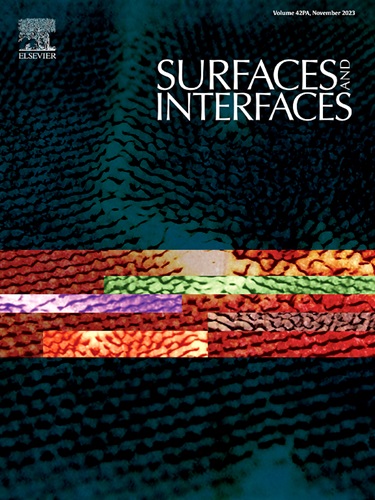Understanding microplastic flotation through microbubble-microplastic interactions
IF 5.7
2区 材料科学
Q2 CHEMISTRY, PHYSICAL
引用次数: 0
Abstract
Microplastic pollution significantly impacts aquatic environment, necessitating effective remediation strategies. Understanding microplastic-microbubble attachment mechanisms is crucial for developing efficient flotation-based removal methods. This study investigates the bubble attachment behaviour of two common microplastics; polyethylene (PE) and polystyrene (PS), across sodium chloride (NaCl) concentrations from 1 mM to 1000 mM. Probability of attachment, Gibbs free energy and adhesion force were analysed to understand their interactions. Results indicate that PE exhibits a higher attachment tendency than PS, particularly at low NaCl concentrations, as evidenced by contact angle measurements and Gibbs free energy. This suggests stronger hydrophobic interactions and surface property influences at low NaCl concentrations. However, the Gibbs free energy difference between PE and PS decreases with increasing NaCl concentration. Adhesion force analysis further reveals that PE consistently shows stronger adhesion than PS, with instant attachment observed at 50 mM and above. At NaCl concentrations above 500 mM, both microplastics display similar Gibbs free energy (∼ -58 mJ/m2), highlighting the dominance of ionic strength in bubble-particle attachment. Laboratory-scale flotation tests confirm improved recovery rates, increasing from 86.7 % to 91.5 % for PE, and from 83.8 % to 92.1 % for PS. These findings underscore the role of high NaCl concentrations in enhancing flotation-based microplastic recovery.

求助全文
约1分钟内获得全文
求助全文
来源期刊

Surfaces and Interfaces
Chemistry-General Chemistry
CiteScore
8.50
自引率
6.50%
发文量
753
审稿时长
35 days
期刊介绍:
The aim of the journal is to provide a respectful outlet for ''sound science'' papers in all research areas on surfaces and interfaces. We define sound science papers as papers that describe new and well-executed research, but that do not necessarily provide brand new insights or are merely a description of research results.
Surfaces and Interfaces publishes research papers in all fields of surface science which may not always find the right home on first submission to our Elsevier sister journals (Applied Surface, Surface and Coatings Technology, Thin Solid Films)
 求助内容:
求助内容: 应助结果提醒方式:
应助结果提醒方式:


